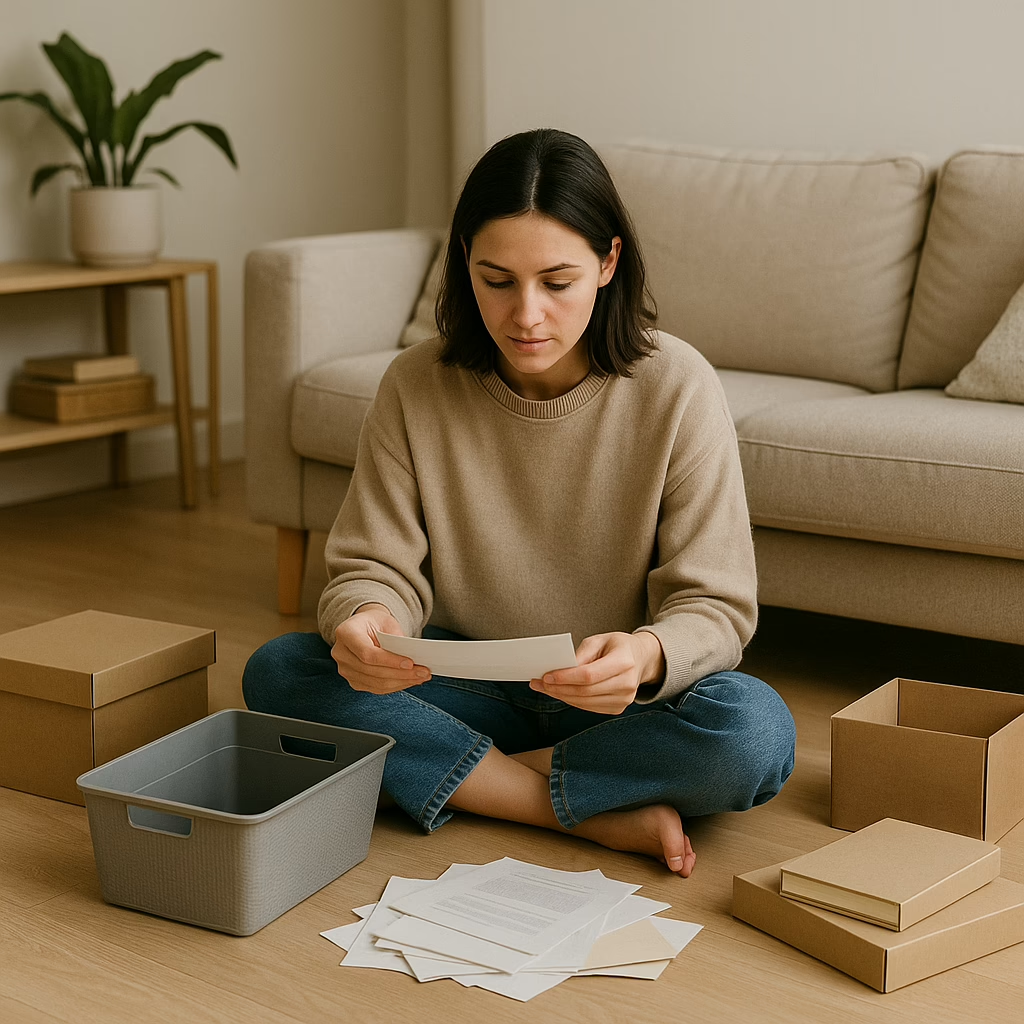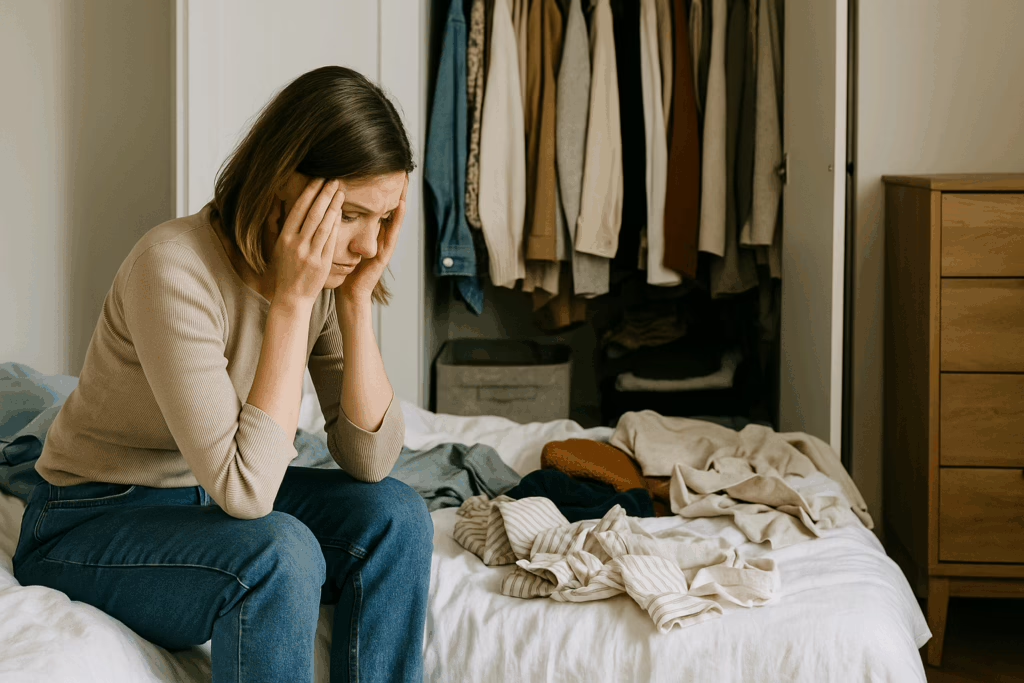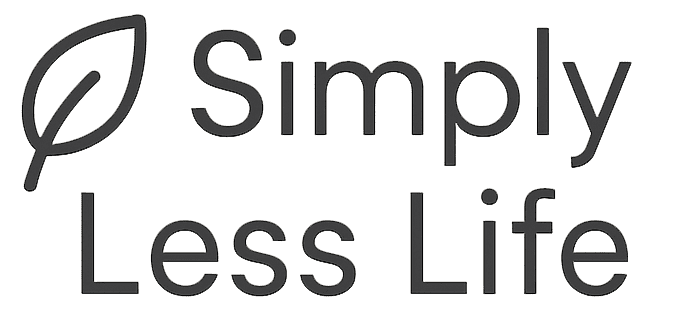What Being a Beginner Minimalist Really Means

Becoming a beginner minimalist isn’t about tossing all your belongings or living out of a suitcase. It’s about choosing clarity over chaos, peace over pressure. At its core, minimalism is an intentional lifestyle — not a rigid aesthetic or a set of strict rules. For those just starting out, it’s easy to assume you need to follow a minimalist “template,” but in reality, minimalism is deeply personal.
The beginner phase is all about learning what truly matters to you — not what a Pinterest board or YouTube guru says should matter. You might still have clutter, mismatched furniture, or a calendar filled with obligations. That’s okay. What matters is that you’ve paused to ask: Is this adding value to my life? That question alone marks the beginning of your minimalist journey.
Minimalism is often misrepresented as cold or extreme, but it can be warm, lived-in, and joyful. It’s not about what you eliminate; it’s about what you protect — your time, your energy, your peace. As a beginner, embracing this mindset over any aesthetic trend sets a strong, sustainable foundation.
My Turning Point: Why I Chose the Beginner Minimalist Path

Before I became a beginner minimalist, my life looked like many others — jam-packed schedules, overstuffed closets, and a constant feeling that I was always behind. I wasn’t drowning, but I was definitely treading water. Every drawer I opened, every task I took on, carried the weight of too much. Too many choices, too many expectations, too many distractions.
The moment everything shifted wasn’t dramatic. It was an ordinary Tuesday. I was late for work because I couldn’t decide what to wear — not for lack of options, but because I had too many. That morning, standing in front of a closet that should have helped me, I felt defeated. It hit me: all this “stuff” wasn’t helping me live better. It was stealing my time and energy.
That was my wake-up call. I didn’t know it yet, but I had just opened the door to a quieter, simpler life. The journey didn’t begin with a dramatic purge. It began with a decision — to stop letting things control me and start being intentional about how I lived.
If you’ve ever felt overwhelmed by your own life, take heart. That feeling can be the very invitation you need to make a lasting change.
The First Steps I Took as a Beginner Minimalist
Starting as a beginner minimalist felt less like a grand transformation and more like a quiet return to myself. I didn’t rent a dumpster or donate half my house overnight. Instead, I made one small decision at a time — and those small decisions made a big difference.
The first step? Clearing a single kitchen drawer. That simple act gave me a surprising sense of relief. It wasn’t just the absence of clutter — it was the presence of clarity. From there, I moved to my inbox, unsubscribing from dozens of emails I never opened. Then I tackled my calendar, gently declining invitations or obligations that no longer aligned with my values.
These early steps weren’t about perfection — they were about progress. Each choice to let go gave me more space to breathe, to focus, and to notice what I actually loved. I didn’t need to throw away everything. I just needed to ask, over and over again: Does this serve me now?
The key was starting small and staying curious. Minimalism, especially in the beginning, isn’t about what you remove — it’s about what you make room for.
Biggest Lessons I Learned Along the Way
Looking back on my journey as a beginner minimalist, the biggest lessons had less to do with stuff — and more to do with mindset. I expected to feel lighter after decluttering, but I didn’t expect how much mental space I’d gain. Simplicity didn’t just clear my shelves; it cleared my thinking. For the first time in years, I felt like I could hear myself again.
One of the most powerful shifts was learning to be okay with “enough.” I used to chase more — more clothes, more gadgets, more goals — thinking they’d bring security or happiness. But minimalism taught me that enough is a decision, not a destination. The moment I stopped chasing, I started living more fully in the now.
Of course, it wasn’t all smooth. I made plenty of mistakes — like donating something I needed a week later, or over-decluttering in a burst of excitement. But even those missteps taught me grace. Minimalism isn’t a competition or a performance; it’s a relationship with your life. And just like any relationship, it requires patience, honesty, and a willingness to evolve.
How Minimalism Changed My Day-to-Day Life
Becoming a beginner minimalist didn’t just declutter my home — it transformed how I moved through each day. Mornings became smoother. I no longer stared into a chaotic closet trying to decide what to wear. My wardrobe was smaller but more intentional, and the decision fatigue disappeared. That simple shift gave me back time and energy I didn’t know I was losing.
My home began to feel like a place of rest instead of a storage unit. Fewer items meant fewer things to clean, organize, or worry about. And with less visual noise around me, I found my mind quieter, too. I could sit with a cup of tea and actually enjoy the moment instead of feeling like I should be doing something else.
But perhaps the most surprising change was how minimalism shifted my relationships. I had more time for people, more presence in conversations, and more capacity to show up fully. I wasn’t constantly distracted by chores, errands, or mental clutter. Simplicity gave me the space to be more available — to others, and to myself.
This lifestyle isn’t about less joy — it’s about more of the right kind.
Beginner Minimalist Mistakes to Avoid
As a beginner minimalist, it’s easy to fall into traps that look like minimalism on the outside but feel stressful or restrictive on the inside. One of the most common mistakes is trying to copy someone else’s version of minimalism — whether it’s an Instagram-perfect apartment or a 30-item capsule wardrobe. The truth? Minimalism only works when it’s built around your values, not someone else’s aesthetic.
Another pitfall is going too fast. It’s tempting to do a dramatic purge, but this can lead to regret or burnout. Instead, experts like Joshua Becker of Becoming Minimalist recommend starting with easy wins — like duplicate items or things you already know you don’t use. Slow, thoughtful progress beats impulsive overhauls every time.
And then there’s the guilt. Some beginners feel ashamed for having things or for struggling to let go. But guilt has no place in a minimalist life. Courtney Carver, author of Soulful Simplicity, shares that minimalism isn’t about deprivation — it’s about freedom, clarity, and peace.
The final mistake? Thinking there’s an endpoint. Minimalism isn’t a destination — it’s a continual practice of alignment. You’ll grow, change, and so will your version of simple living.
Start small. Stay honest. Make it yours.
Simple Tips for Staying Consistent as a Beginner Minimalist
Once you’ve taken those first steps as a beginner minimalist, staying consistent is often harder than starting. Life gets busy, clutter creeps back in, and the old habits quietly return. The secret isn’t in constant decluttering — it’s in staying connected to why you started.
One powerful way to stay grounded is by creating simple habits that align with your values. For example, try the “one in, one out” rule — if you bring something new into your space, let something go. Leo Babauta, author of Zen Habits, offers timeless guidance on developing mindful routines that help simplicity stick without feeling rigid or joyless.
Another tip: revisit your progress. Before-and-after photos, journal entries, or even just walking into a peaceful room you’ve decluttered can remind you why this lifestyle matters. The Slow Living movement also provides a helpful framework for aligning your pace and possessions with what truly fulfills you.
Finally, give yourself permission to adjust. Minimalism isn’t a straight line — it ebbs and flows with your life seasons. If something no longer feels simple, it’s okay to shift. The point is to live intentionally, not perfectly.
Small habits. Big purpose. That’s the long game.
Your Minimalist Journey Starts Today — And It’s Yours Alone
If you’re stepping into life as a beginner minimalist, remember this: there’s no one-size-fits-all path. Your version of simplicity might look completely different from someone else’s — and that’s not just okay, it’s beautiful. Minimalism is not a trend to follow; it’s a lifestyle to shape around what brings you peace, clarity, and joy.
Whether you’re decluttering your home, rethinking your schedule, or learning to say “no” with confidence, every small decision you make toward less is a step toward more of what matters. You don’t need to wait for a new year or a perfect moment. You can begin now — exactly where you are.
If you ever feel stuck or unsure, there are entire communities built around encouraging simplicity. The r/minimalism subreddit is filled with everyday stories, while No Sidebar offers inspiring articles that emphasize life beyond the clutter.
Minimalism isn’t about having nothing — it’s about making space for everything meaningful. The courage to start is the most minimalist move you can make. Trust your pace, stay honest with your values, and remember: you are not behind. You are becoming.

